|
FAQs on
Parrot,
Jelly-Bean... Cichlids, Disease/Health 5
FAQs on Parrot Disease:
Parrot
Cichlid Health 1, Parrot
Cichlid Disease 2,
Parrot Cichlid Disease
3, Parrot Cichlid
Disease 4, Parrot Cichlid Disease 6,
Parrot Cichlid Disease 7,
Parrot Cichlid Disease 8,
FAQs on Parrot Cichlid Disease by Category:
Diagnosis,
Environmental,
Nutritional (e.g. HLLE),
Social,
Infectious (Virus,
Bacterial, Fungal), Parasitic (Ich, Velvet...),
Genetic,
Treatments,
Related Articles:
Blood Parrots & Flowerhorn
Cichlids: maintenance and healthcare of two popular hybrid
cichlids by Neale Monks,
Neotropical Cichlids,
African Cichlids,
Dwarf South American Cichlids,
Cichlid Fishes in General,
Related FAQs:
Parrot Cichlid
Identification, Parrot Cichlid
Behavior, Parrot Cichlid
Compatibility, Parrot Cichlid
Selection, Parrot Cichlid
Systems, Parrot Cichlid
Feeding, Parrot Cichlid
Reproduction,
|
|
|
Question on Blood Parrot Fish - Red Gill Cilia
5/9/17
Hi Team -
I wanted to double check something with you all.( I have read all I can find
related to this issue including posts you all have from a few years ago and find
conflicting info)- I have two Blood Parrot fish in a 45 bowfront tank. I got
them small, they are now about 5 inches long and getting pretty stout. I have
noticed they have the red gill cilia hanging out of their gills now that they
are bigger (one of them has it more so than the other), where it looks like a
ton of short red tentacles hanging out. Was there ever a consensus that this is
a "norm" for them since they are a hybrid? I saw some posting on it a while
back, with pictures and mine look the same. I am regular with water changes (
every 4 weeks) and have live plants in the tank, water parameters good and temp
is regulated about
76 degrees. No other issues with them.
Thank you :)
Kristie
<If these "tentacles" are bright red and feathery-looking, they're almost
certainly gill lamellae. They might be overlong, but what more often happens is
that the gill covers (or opercula) are either too short, damaged, or become
twisted in such a way that the gills underneath are visible. The intensively
farmed Blood Parrot cichlid is much more likely to have this sort of deformity
from birth than most other fish, but even (genetically) healthy fish can be
exposed to physical damage, trauma, or environmental stress that causes the gill
covers to become deformed. Look up "gill curl" on large catfish and Arowanas,
where it is a very common problem that occurs when the fish are kept in a tank
too small for them. In any case, in itself, exposed gill lamellae isn't usually
a problem, but it does allow sensitive tissue to be exposed to the environment,
and the reduction in pressure within the gill cavity does mean that gaseous
exchange (i.e., ventilation) is somewhat compromised relative to normal. So keep
these fish in a well-oxygenated environment, away from anything likely to peck
at them, and take extra care when handling them, e.g., by using a soft, fine net
rather than a coarse one. Hope this helps, Neale.>
Re: Question on Blood Parrot Fish -Red Gill Cilia 5/9/17
Hey Neale, thank you for answering so quickly – I wanted to shoot you a couple
of pics right quick to take a quick look – I think the bigger of my parrot fish
does have a slight gill plate curl of sorts on the left side, which is what the
pictures are of – his left side – I have nothing in my 45gal bow front except
these two parrot fish and a little lobster – he has his own little Stonehenge
rock area and a small log he hangs out in – but I was considering taking him out
and putting him in his own gallon tank to protect him, and my fish as they get
bigger they might try to eat him but also don’t want to put them at risk if it
isn’t a good idea to have t my lobster in there if my fish could be more prone
to disease if the gill lamellae are much more exposed than normal fish?
<Crayfish are never really 100% safe with fish -- or vice versa when crayfish
moult and aren't able to defend themselves. So moving a crayfish to its own tank
is something I usually recommend. But you'll know your own fish better, and if
you think he's safe in his burrow, and he's too small to harm the cichlids, he
may well be fine.>
That being said, it sounds like I should perhaps add a long air bubbler wand or
something to increase oxygenation to make things easier for them.
<I would. Or something similar, perhaps a spray bar for the filter outlet, that
sort of thing.>
I have a BioWheel filter with two biowheels for a 60gal size tank on their
aquarium, and the water circulates a good bit, but will add an airstone wand if
this will help them. I know they are hybrids and I hate that ☹ I took them as a
rescue.
<Understood. Many fish in the hobby are hybrids -- Goldfish, Angelfish,
Discus, Guppies, Mollies, Platies, and Swordtails to name but a few! But Blood
Parrots do seem to have more than their fair share of detractors -- as well as
some persistent health problems.>
I am sorry if the pics are big – they were the best I could get yesterday and
just wanted you to take a fast look -THANK YOU Neale – you all are GREAT!!
<Glad to help, and good luck! Neale.>
|
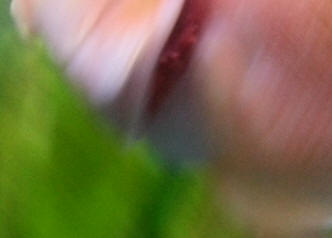
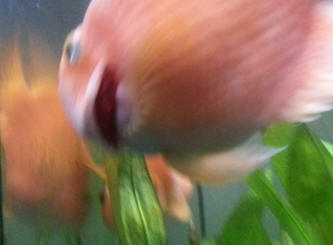 |
Parrot fish keeps swimming upside-down
11/15/16
Hi
Please help I have a parrot fish and he has been swimming upside-down for a
while.
<Is this a marine Parrotfish, family Scaridae; or else one of those hybrid
cichlids sometimes called Parrot Cichlids?>
I Googled and tried to do the Epsom water thing for 15 minutes a lot of times.
It doesn't seem to help much. He is now more just flat on his side and not
swimming. This has been going on for about a month. I have him in a separate
tank alone now. What should I do?
Marina
<Assuming it's one of the cichlids, let me have you do some reading. Start here:
http://www.wetwebmedia.com/FWSubWebIndex/FHParrotCichArtNeale.htm
Virtually all problems with Parrot Cichlids come down to environment and
diet. Any problems with these are exacerbated by their skeletal
deformities, which among other things, mean they can't balance easily when
constipated or, less commonly, suffering from gastro-intestinal infections.
Review, and act accordingly. If you choose to write back, be sure to tell us
things like the size of the tank, diet, and water quality (crucial, this!)
otherwise we can't really offer any useful help. Let me also direct you here:
http://www.wetwebmedia.com/ParrotDisTrtF.htm
Treatments for these cichlids are most often a combination of Metronidazole,
Epsom Salt, and optimised water quality. So even if you can't identify the
problem, using these three tools, simultaneously, should help.
If we're talking about marine Parrot Fish, Scaridae, let me have you read here:
http://www.wetwebmedia.com/parrotfi.htm
As with most of the larger marine fish, health issues come down to environment
99 times out of 100, so review the obvious things like salinity and temperature,
as well as dissolved metabolites (nitrite, ammonia). If these check out, please
write back, again describing the marine system, filtration, water chemistry
parameters, etc. Hope this helps, Neale.>
|
Please HELP! Our red parrot fish got white stuff.
8/14/16
Hello
<Hi there>
Can you please identify the white bit on our parrot fish body (pictured)
and advise me of how to cure her?
<Mmm; no photo/s attached. Please resend after perusing what we (WWM)
have archived re Parrotfish care>
She has been with this for weeks, and it seems growing.
We change her water in two weeks usually. The water parameters are
normal.
<Change? How much... Normal? Need data; not subjective evaluation. The
reading. Bob Fenner>
TIA,
Meg
Re: Please HELP! Our red parrot fish got white stuff. In a five
gal. bowl: Env. 8/15/16
Hello
<Meg>
>Mmm; no photo/s attached.
Really? Sorry for this. I attach the photos again.
<Thank you>
>Change? How much... Normal? Need data; not subjective evaluation.
10 litres, a half of the total amount.
<Yeeikes! This fish is in a 20 litre bowl? Trouble... PLEASE read here:
http://www.wetwebmedia.com/fwsubwebindex/FHParrotCichArtNeale.htm
and the linked files above: Especially "Systems" and "Environmental Disease"
FAQs files. Bob Fenner>
Thank you in advance,
Meg
|
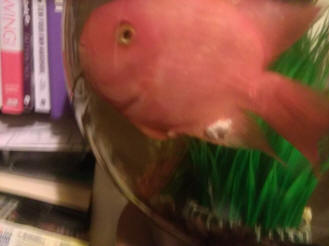
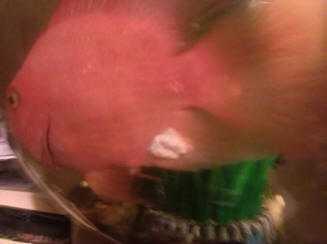 |
|
Blood parrots gills are cherry red
8/2/16
Hello,
I have a 5 year old blood parrot and two blood parrots that are
approximately 7 months old. My younger ones have bright red fluff, strings
hanging from behind their gills. I have treated with antibiotics twice
with no change. My five year old blood parrots gills are fine so I feel it
may not be gill flukes. I have no idea? They have been eating fine. It
has been a month now. Please help if you have any suggestions.
Thank you,
Jessica
<I'm really not sure about this. The photos aren't sharp enough to see
anything useful. If this fish is feeding well and otherwise healthy, I'd
probably adopt a wait-and-see approach for now. Is the fluffy red stuff
getting worse? Is it the same bright red colour as the actual gill
filaments? If it is the same as the gill filaments, suggestive of a healthy
flow of blood to the fluffy tissue, I'd wonder if it wasn't just a
deformity of some sort, whether genetic (common with these inbred hybrids)
or as a result of some environmental stress (a too-small aquarium for
example). Either way, nothing much to be done. If it's different to the
gill filaments, perhaps a duller red suggestive of dead tissue, then I'd
perhaps treat for Gill Flukes just to be on the safe side. Do look out for
visible specks on the gills suggestive of Gill Lice and other copepod-type
parasites. Although rare in aquarium fish, you do see them on fish farms
from time to time, and it's not impossible for them to get into aquaria or
ponds. Hope this helps, Neale.>
Re: Blood parrots gills are cherry red
8/2/16
Thank you so much for your reply. I have a 55 gallon and have 3 blood parrots.
It's odd how a month ago this just developed. The redness is bright and has a
fluffy, feather like movement. Yes, I agree the picture doesn't show clearly
what it actually looks like. I never heard of this deformity or whatever it
maybe. No one has heard or has a name for this as far as I know.
<There is a problem called "Gill Curl" that occurs in some other fishes when
kept in relatively small tanks. Not saying that's the issue here, but it is
certainly true that the environment can affect the development of the gills,
sometimes in odd ways.>
I truly appreciate your reply��
<Most welcome. Neale.>
|
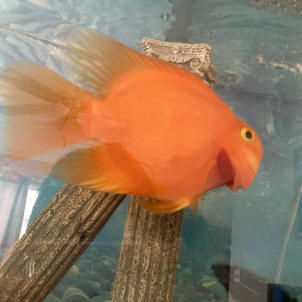
 |
|
Re: Blood parrots gills are cherry red 8/4/16
Hello Neale,
<Jessica,>
I have looked on-line and seen pictures of it. There is no treatment or name for
it from what I see. It's definitely gill damage of some kind and the gill is a
little curled because of red feathery, stringy fluff coming out.
<Understood. Will either die and fall off, or heal up but remain deformed. Can't
think of any treatment as such.>
I think it stemmed from a day the power went out for a couple hours and I wasn't
home. The two younger BP's were affected and the older fish wasn't... Who knows.
The gill damage has been done for whatever the reason.
<Given the gill filaments are normally hidden away behind the gill covers, to be
pulled away or torn, the gills would have to be seriously beaten up! Really,
setting aside large parasites that might damage gill tissue, I think you're
choosing between fighting or clumsy handling (e.g., netting).>
The fish appear fine, just look sick. I was hoping there would be a fix to the
problem but I guess it is what it is��
<Quite so. Cheers, Neale.>
|
|
Strange growth on otherwise healthy Flowerhorn... Parrot
4/7/16
Notice white growth just below Jr's gill. He's otherwise very healthy and
exhibits normal behavior, he just started showing a growth a couple weeks
ago. Please, if you have any idea why or what to do about it let me know.
I'm going to email a couple more picks
<Does look like necrotic tissue rather than a parasite. So some combination
of environment and physical damage triggering a bacterial infection. Do
review living conditions, tankmates and diet. Most problems with Flowerhorns
come down to these. Do READ; starting here...
http://www.wetwebmedia.com/fwsubwebindex/FHParrotCichArtNeale.htm
http://www.wetwebmedia.com/fwsubwebindex/flowerhorndisfaq.htm
...and following the links on top of those pages. Cheers, Neale.>
|
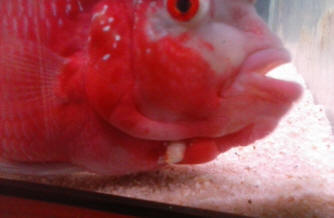
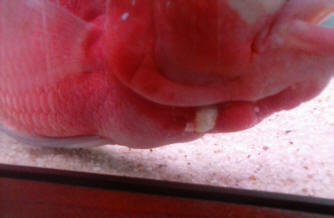 |
|
re: 4/7/16
<Is there prev. corr. to this? B>
re: ? 4/7/16
Nope... It just started like 2.5 wks ago. But check this out... About 3
hours ago i was doing a couple water changes, Jrs tank included. Now Jr
tries his best to beat my hand
<Territorial aggression; sometimes misunderstood as play.>
and syphon up while working in his tank and i noticed the growth didn't look
as big. So i picked him up and checked closer and it appeared to be smaller.
Here it was like a clear sack full of sand hanging out of his gill plate. I
know this sounds strange, but I've never seen anything like that before! I
use sand as the substrate, and he's always digging in it and pushing it
around so i don't know if he had some get stuck in his gills and his body
was naturally trying to remove it or what.
<Many cichlids are sand-sifters, so do ensure their substrate is smooth,
clean, and not so deep anoxic pockets can develop. Smooth silica sand with
10% coral sand, or a slightly alkaline river sand, would both be good
choices for hybrid Central American cichlids.>
So now at this time its gone, and i am now baffled... How bout you?
<I've no idea what the "nope" refers to... so really, this entire message is
baffling to me! Cheers, Neale.>
? Parrot; hlth 4/7/16
He has a 75gal all to himself and no decor to bump into. His temp stays 83
degrees, I change the water once a week, feed grand sumo and grand sumo red,
and freeze dried krill.
<Does need more variety than this... what sort of fresh greens/plant foods
are you providing? These are necessary for good health, good colouration...
bear in mind that these cichlids (or their ancestors, at least) are
omnivores, not carnivores, and fibre, vitamins, etc. are all important to
them.>
His tank has a HOB and Fluval external going. The mystery growth noticeably
grown in two weeks from out of nowhere. I look closer and it appears another
is starting too. I've researched so many sites on care, and
raised him from 1". Im running 7 tanks of different fish successfully,
including two other beautiful Flowerhorns I've raised for years, so im not a
rookie or greenhorn. But this growth thing is a first. Its GOTTA be
parasitic, id bet on it....or a tumor. Is that possible with fish?
<Yes.>
Lol!
<Again, let me have you do some reading...
http://www.wetwebmedia.com/fwsubwebindex/FHParrotCichArtNeale.htm
Nothing remotely unusual about the symptoms described, and almost certainly
environmental... your job is to establish what isn't quite right, and act accordingly. Cheers, Neale.>
|
|
please help - parrot fish sick after laying eggs; env., soc.
4/7/16
Hi there,
we have a fresh water aquarium with African cichlids, some gourami's
and some loaches.
<An odd mix; there's really no such thing as "African cichlids" any more
than saying "American birds" or "European mammals". It's much too general to
mean anything helpful. However, the standard "mixed African cichlids" of
the US aquarium trade are the Mbuna, typically Pseudotropheus hybrids.
While these herbivorous fish appreciate similar water chemistry to your
Parrots, they are MUCH too aggressive, and fighting/stress can cause all
sorts of problems in mixed species set-ups.>
Our favourite two fish are a male and female parrot fish.
<These hopelessly inbred and deformed fish are not good companions for more
boisterous cichlids. If you love 'em, move 'em. A 55-gallon tank is adequate
for a pair. Alternatively, remove the Mbuna.>
They just bred a few days ago and the female named Sophie was in her hiding
place guarding over her eggs. A few days later now and the male is
protecting the eggs while Sophie is lying at the bottom of the tank on the
opposite corner looking very weak and like she may die if we don't help her
quickly.
<You MUST isolate/remove the female. See below...>
This also happened straight after we did a 40% water change.
<This could have been the trigger, or aggression from the other fish.
Here's the deal. Cichlid pairs depend on the situation. In the wild they
carefully choose partners, and before spawning, do all sorts of "tests" on
each other to see if they're both equally competent. This is all part of the
courtship ritual. Those cichlids that aren't able to pair off, spawn and
look after their juveniles properly will leave fewer, if any, offspring when
compared to competent ones. So over time, natural selection favours the
skilful cichlids. Now, on fish farms cichlids don't get to choose partners,
and it doesn't matter if they're good parents or not because the human
removes the eggs and rears the fry manually. All good stuff for producing
cheap livestock, but does mean natural selection can't operate.
Over the generations tank-bred, and especially those non-natural, invented
cichlids like Parrots end up losing the good parenting genes. This is a
massive issue with Angelfish, which are almost all totally incompetent
parents! But in any case, it doesn't take much for pairs of Parrots to
become dysfunctional (like yours) turning on each other. Sometimes a
triggering factor, basically a stress or scare, caused the breakdown in
marital bliss. But it might have happened anyway.>
We also can see a snail floating at the top which we have never seen before.
<Probably not relevant.>
I have attached two pictures of Sophie sitting at the bottom and one of the
Male parrot guarding eggs inside the hiding place.
I don't know hat your response rate is but if you can please give us some
advice how to help her we would very much appreciate that as she is our
favourite little fish.
Thank you
Kindly,
Miriam
<I would remove the female to her own aquarium where she can recover; it's
extremely unlikely the male will accept her now he's parenting on his own,
and chances are he'll become even more aggressive once the fry start
hatching and roving around the tank. If she's bloated, which I can't tell
from the photo, medicating with Epsom salt will be useful. Do read:
http://www.wetwebmedia.com/fwsubwebindex/SaltUseFWArtNeale.htm
http://www.wetwebmedia.com/fwsubwebindex/parrotcicdisf.htm
http://www.wetwebmedia.com/ParrotSocDisF.htm
Hope this helps, Neale.>
|
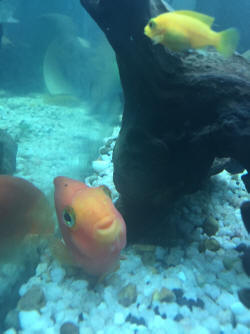
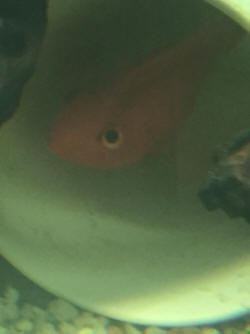 |
|
Re: please help - parrot fish sick after laying eggs
4/7/16
Hi Neale,
<Miriam,>
Thank you for your swift response. She has gone back to her eggs and they
are both together in there, he is busy keeping fish away from the eggs and
she is inside helping him do so. We have no idea if the eggs will hatch, we
will give it a day or two further as the eggs have been there for about four
days so far. If they hatch we will move them and her to another tank.
If not, we will get rid of the eggs and hope everything goes back to normal.
<They aren't especially fertile fish, and breeding at home tends to be
unproductive. But then again, I just said they're unlikely to "mend their
marriage" and yet they've don exactly that, so what do I know? I would,
however, keep a very close eye on them. I would not assume they'll be
happily married indefinitely.>
In terms of using Epsom salts, we have a 132 gallon tank, with what we know
to be called Malawi cichlids who are all babies and not aggressive to the
parrot fish who are much bigger.
<Juvenile Mbuna can be quite fun, for sure. And there are one or two species
that might conceivably work with Parrots; I'm thinking of Iodotropheus and
Labidochromis in particular. But most are psychotic when mature, in the
sense of being intensely territorial and ravenously hungry (they feed on
algae all day long in the wild, and defend their feeding spots against all
comers). I've seen even Labidochromis, the "friendly Mbuna", strip the fins
from much larger Senegal Bichirs unlucky enough to be in the same tank. So
do NOT assume yours will stay friendly! I'm trying
to think who said it, but "trust everyone, but carry a big stick" is a good
approach with cichlids generally, and doubly so with Mbuna. On the other
hand, if these aren't Mbuna, but instead things like Aulonocara or
Cyrtocara, then Parrots might work, given space.>
(Malawi cichlids very popular here as we are in South Africa and border with
Malawi) ...
<I'm distinctly jealous! Some great native South African fish too...>
Can we put Epsom salts into the tank with these two cichlids, Gouramis and
clown loaches?
<Yes.>
If so, how much do we put?
<See the article for details; 1-3 teaspoons per 5 gallons/20 litres.>
We were thinking of doing so just for the general health of the tank, is
that a good idea?
<Nope. Use Epsom salt to medicate (it's good for reducing swelling) but not
forever. Only until the swelling goes down. Remember, add the appropriate
amount per bucket of water; don't dose the whole tank each water change or
you'll overdose! So if you change 20 litres, 1-3 teaspoons is what you'll
use. Not the number of teaspoons for the whole tank. Cheers, Neale.>
Re: please help - parrot fish sick after laying eggs
4/7/16
Great, thanks Neale, really appreciate your swift response. All the best
<Most welcome. Neale.>
|
|
|

